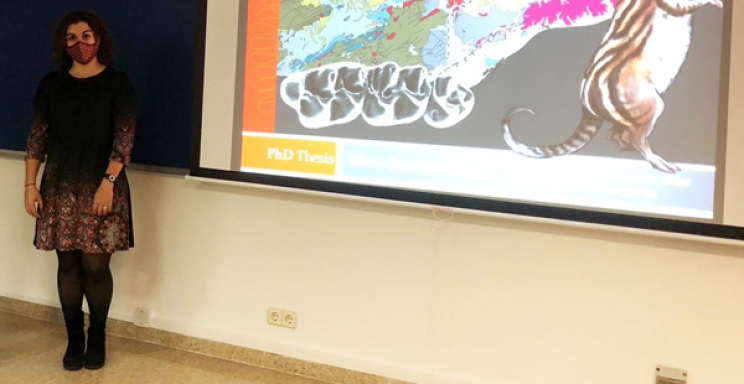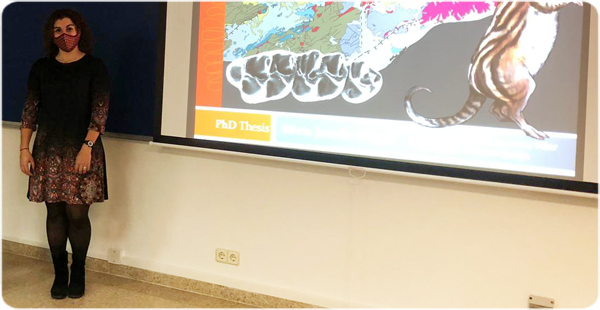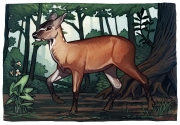The court has awarded the work "Early Miocene cricetidae from the Vallès-Penedès Basin (Catalonia): taxonomy, biostratigraphy and paleoecological implications" with the highest score and granted Jovells-Vaqué with the PhD degree. Due to the current pandemic circumstances, the defense has been carried out in a blended way at the Universitat Autònoma de Barcelona (UAB).

Abstract
The early and early middle Miocene (late Ramblian to middle Aragonian; ca. 19-15 Ma) rodent record of the Vallès-Penedès Basin (Catalonia, north-eastern Spain) is far richer and more continuous than previously thought. This thesis is focused in the description of the cricetid fauna from this time interval and its biostratigrahical, paleobiogeographical and paleoenvironmental implications.
The systematic study of the cricetid fauna of all known early and early-middle Miocene sites from the Vallès-Penedès Basin defines the main body of this work. The studied material comprises nearly 1,000 isolated molars as well as some mandibular fragments and even a partial skull.
Four cricetid genera occur in the early to early middle Miocene (late Ramblian-middle Aragonian, MN3-MN5) record of the Vallès-Penedès Basin. The archaic cricetid Melissiodon dominans is common during Ramblian zone A (ca. 19.3-17.2 Ma) a before the dispersal of the so-called ‘modern cricetids’ of the genera Democricetodon and Megacricetodon. Modern cricetids are dominant components ofAragonian zone C and early zone D faunas (ca. 16.5-15 Ma) and include four species of the genus Democricetodon and one of the genus Megacricetodon (M. primitivus). The paracricetodontine Eumyarion weinfurteri and the last Melissiodon dominans complete the cricetid assemblage, but both species are generally rare.
Overall, the early Miocene cricetid succession shows several affinities with that from the Aragonian type area, the Calatayud-Montalbán Basin (Aragon, east-central Spain) allowing the use of the same high-resolution local biostratigraphy, with only minor differences. Moreover, Vallès-Penedès faunas also show a few similarities with the central European ones. Biostratigraphical results are combined with novel magnetostratigraphic data allow constraining the age of several major regional to continental bioevents that characterize the early Miocene, including dispersal events from other continents into Western Europe.
Finally, small mammal faunas are used to reconstruct regional paleoclimate between ca. 19 and 15 Ma and to compare it with other Western Europe records. Rainfall patterns are inferred from small-mammal community structure and indicate regional aridification coinciding with the height of the mid-Miocene Climatic Optimum between 16.5 and 15 Ma. The Vallès-Penedès is further recognized as a transitional area between the forested and humid central European bioprovince and the more arid and rainfall seasonal inner Iberian bioprovince. Such situation, which had previously been recognized for the middle and early late Miocene already existed at the beginning of this epoch.















